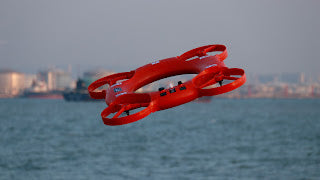Introduction
At the scene of an emergency, every second can determine life or death. The existence of rapid rescue equipment is to improve emergency response speed and rescue efficiency, and to gain valuable time to save lives. This article will delve into the operation methods and usage skills of a series of key rapid rescue equipment to help you quickly and correctly use these rescue tools to maximize their effectiveness when encountering emergencies.
1. Demolition Tools
1. Hydraulic shear and expander The hydraulic shear and expander is a multi-functional rescue equipment used to cut metal structures or expand the space of objects to rescue trapped people. Before starting, ensure that the oil pressure of the equipment is normal, connect the power source, then select the corresponding working head according to the actual situation, and adjust the angle and strength according to the instructions in the operation manual to perform the operation.
2. Electric diamond chain saw is suitable for cutting hard materials such as concrete and masonry. Wear protective equipment during operation, maintain a stable posture, and gradually apply pressure after starting the saw blade to avoid excessive force that may cause the saw blade to jam or splash and injure people.
2. Life detection and search equipment
1. Thermal imaging camera The thermal imaging camera can detect the vital signs of trapped persons in dark or smoky environments. After powering on and preheating, look for potential survival signals by observing the temperature difference changes on the screen. Be careful to keep an appropriate distance to avoid affecting accuracy.
2. Radar life detector uses radar waves to detect the heartbeat and breathing activities of trapped persons. After setting the instrument parameters, slowly move the device to scan the suspected area to identify and locate signs of life.
3. First aid and transport equipment
1. Folding stretcher When the trapped person is found and contacted, use a folding stretcher for safe transfer. Follow the principle of "light, steady and fast" and two or more people work together to minimize secondary damage to the injured.
2. Automated external defibrillator (AED) AED is a key life-saving device in case of cardiac arrest. After turning on the device, follow the voice prompts to complete a series of steps such as attaching the electrode pads, analyzing the heart rhythm, and delivering electric shocks if necessary, until professional medical personnel take over.
4. UAV water rescue application: Detailed explanation of TY-3R flying lifebuoy
In the field of modern high-tech emergency rescue, the application of drone technology is becoming increasingly popular. Among them, the TY-3R air-water rescue drone system is an innovative rescue equipment that integrates intelligent technology and rapid response. This "flying lifebuoy" cleverly combines drone technology with traditional lifebuoy design, significantly improving the response speed and accuracy of water rescue.
Operation preparation and startup phase:
Before using the TY-3R flying lifebuoy, first check that the drone battery is fully charged, that the lifebuoy module is in standby mode, and confirm that the remote control communication is normal.
According to the drone operation guide, start the drone and complete the GPS positioning to ensure that the flight control system is stable.
Deployment and delivery process:
The operator monitors the target area in real time through a high-definition camera. Once the location of the drowning person is determined, the operator can command the TY-3R to quickly fly to the target location under long-distance control.
Utilizing the precise automatic driving function, TY-3R can accurately reach the predetermined position in complex water environments.
When approaching a person in distress, just press the button to trigger the locking mechanism, and the TY-3R flying lifebuoy will immediately stop rotating, waiting for the person who falls into the water to grab it. Moreover, this equipment supports multiple take-offs and landings on the water surface, providing multiple opportunities for flexible rescue.
Follow-up and assisted rescue:
After placing the lifebuoy, TY-3R can continue to hover in the air for monitoring, providing real-time picture support for subsequent rescue teams and helping to guide other rescue ships or helicopters to the scene.
Some TY-3R models are also equipped with sound and light warnings and wireless communication equipment, which can comfort the trapped people while waiting for rescue, and even provide necessary self-rescue guidance.
To sum up, the TY-3R flying lifebuoy has greatly improved the success rate and safety of water rescue operations with its highly intelligent, quick response and long-range release characteristics, and has become an important part of the modern rescue system. Whether it is responding to sudden floods, drowning incidents in lakes and rivers, or in ocean search and rescue operations, TY-3R can play an outstanding role and win valuable time to save lives. When using such advanced equipment, rescuers must undergo professional training and be familiar with its operating procedures and safety precautions to ensure that they can be foolproof in actual combat.
Conclusion
It is crucial to master the operating procedures of rapid rescue equipment, but practical application also requires a combination of good judgment, a calm mind, and teamwork skills. Regular practical drills and skills training are conducted so that every rescuer can skillfully use various rescue equipment in times of crisis, truly realizing the seamless connection from equipment to life, and transforming the power of science and technology into real life-saving power.
For the safety of ourselves and others, let us learn, practice and share the knowledge of using these rapid rescue equipment together to build a safer social environment. At the same time, it should also be emphasized that when facing an emergency, it is more important to promptly dial professional rescue hotlines, such as 119, 120, etc., and cooperate with professional rescue forces to carry out work.





